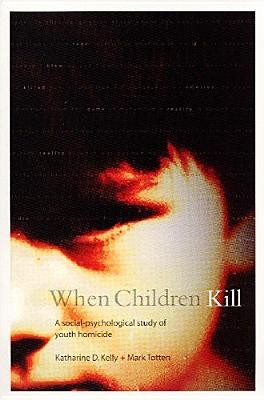
- We will send in 10–14 business days.
- Author: Katharine Kelly
- Publisher: Broadview Press Inc
- ISBN-10: 1551114178
- ISBN-13: 9781551114170
- Format: 15.2 x 22.6 x 1.8 cm, minkšti viršeliai
- Language: English
- SAVE -10% with code: EXTRA
Reviews
Description
Youth homicide is an uncommon event, but it raises serious concerns. How should the criminal justice system respond to violent young offenders who take the lives of others? Public discourse focuses on the depravity of the acts and of the adolescents involved. The stress is on punishment and retribution. Yet, these children were not born bad; they were created, and the social context of their lives is usually ignored.
This qualitative study of young offenders convicted of murder and manslaughter takes on the challenge of examining the social-psychological development of young people convicted of homicide. In-depth interviews explore offenders' experiences in early childhood, adolescence, and young adulthood; their accounts of the homicides; and their life in custody. This research shows that the pathways leading young people to homicide are as varied as the types of killings perpetrated. Some were raised in social environments conducive to extreme violence where they witnessed, experienced, and were trained in the use of violence. Others found themselves frustrated and angry by their life circumstances. These experiences contributed to a lack of empathy for their victims and limited their insights into the enormity of their actions.
This groundbreaking book addresses a critical gap in the literature, highlighting the importance of community-based early intervention, prevention, assessment and rehabilitation. It is a valuable resource for students and professionals.
EXTRA 10 % discount with code: EXTRA
The promotion ends in 21d.06:21:33
The discount code is valid when purchasing from 10 €. Discounts do not stack.
- Author: Katharine Kelly
- Publisher: Broadview Press Inc
- ISBN-10: 1551114178
- ISBN-13: 9781551114170
- Format: 15.2 x 22.6 x 1.8 cm, minkšti viršeliai
- Language: English English
Youth homicide is an uncommon event, but it raises serious concerns. How should the criminal justice system respond to violent young offenders who take the lives of others? Public discourse focuses on the depravity of the acts and of the adolescents involved. The stress is on punishment and retribution. Yet, these children were not born bad; they were created, and the social context of their lives is usually ignored.
This qualitative study of young offenders convicted of murder and manslaughter takes on the challenge of examining the social-psychological development of young people convicted of homicide. In-depth interviews explore offenders' experiences in early childhood, adolescence, and young adulthood; their accounts of the homicides; and their life in custody. This research shows that the pathways leading young people to homicide are as varied as the types of killings perpetrated. Some were raised in social environments conducive to extreme violence where they witnessed, experienced, and were trained in the use of violence. Others found themselves frustrated and angry by their life circumstances. These experiences contributed to a lack of empathy for their victims and limited their insights into the enormity of their actions.
This groundbreaking book addresses a critical gap in the literature, highlighting the importance of community-based early intervention, prevention, assessment and rehabilitation. It is a valuable resource for students and professionals.


Reviews